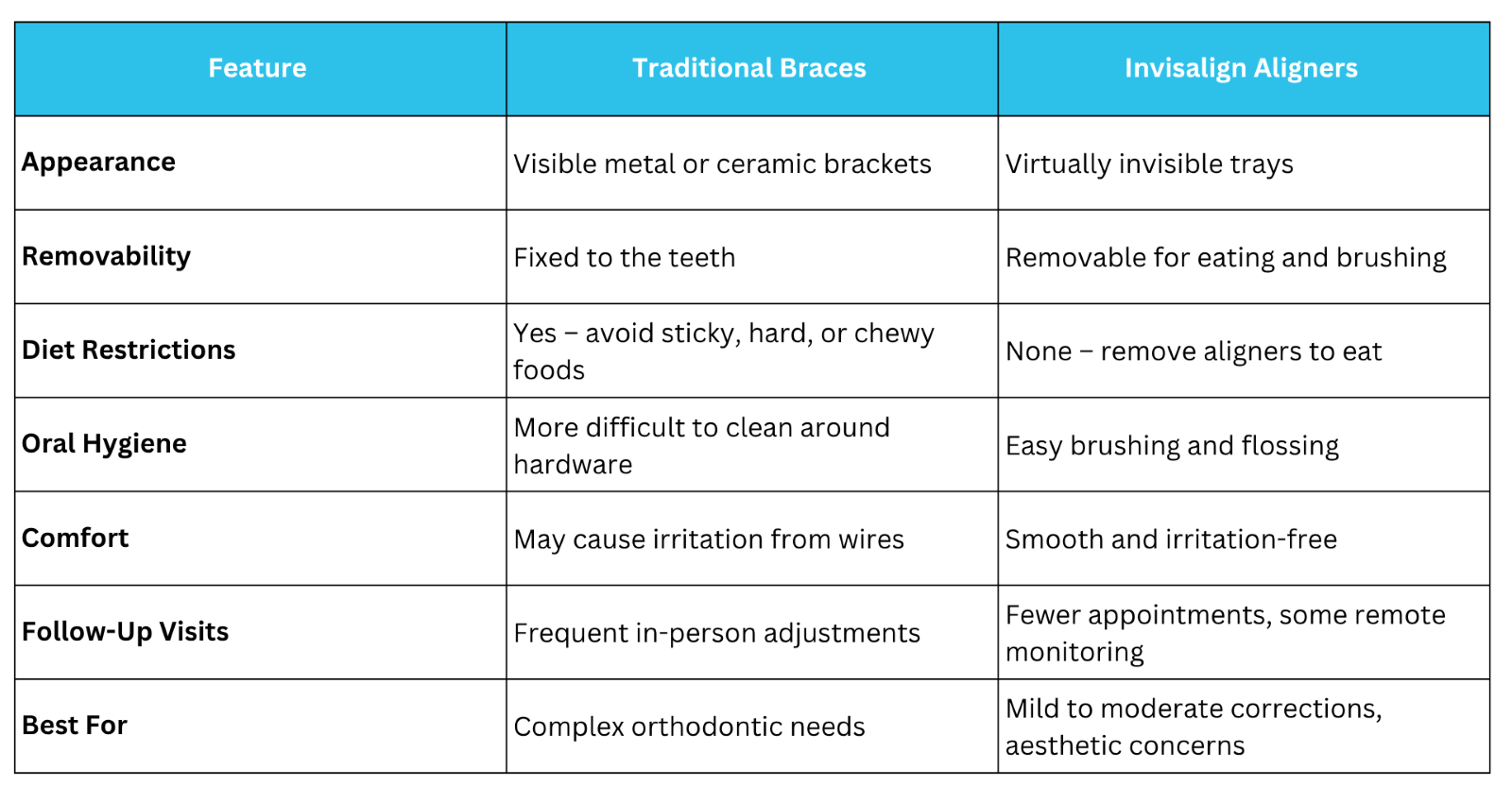

If you’re exploring ways to straighten your smile or your teen’s, the question of Invisalign vs braces is likely top of mind. Both orthodontic treatments are effective but they work in very different ways and offer distinct advantages depending on your lifestyle, goals, and dental needs.
While metal braces have long been the standard in orthodontics, Invisalign has grown increasingly popular as a discreet, removable alternative. So how does Invisalign work? And is it the right choice for your smile journey?
In this blog, we’ll help you compare braces vs Invisalign, walk you through how Invisalign treatment works, and highlight the key factors to consider before starting your orthodontic plan.
Both Invisalign and braces aim to shift your teeth into better alignment, improve your bite, and enhance your overall oral health. But their approach and experience can feel very different.
Braces involve metal brackets that are bonded to the teeth and connected with wires that are adjusted regularly by your orthodontist. They’re fixed in place and can treat everything from mild crowding to severe bite misalignment.
Invisalign uses a series of clear, removable aligners made of smooth plastic. These custom trays are designed to gradually shift your teeth into place without brackets or wires. You’ll wear each set for about one to two weeks before switching to the next in the series.

At Tribeca North Dentistry, we offer both Invisalign and traditional braces allowing us o recommend the most effective, customized treatment for each patient.
If you're wondering, how does Invisalign work, here's what to expect from start to finish:
Instead of goopy impressions, Invisalign begins with a digital scan of your teeth. This allows us to map out your entire treatment plan from day one.
Based on the scan, a series of clear aligners is created just for you. Each aligner is shaped slightly differently to guide your teeth into better alignment over time.
You’ll wear your aligners for 20–22 hours a day, only removing them for meals and brushing. Every 1–2 weeks, you’ll switch to the next aligner in the series.
We’ll schedule check-ins to track your progress and make any necessary adjustments. Some of this monitoring can even be done remotely, depending on your case.
After your treatment is complete, you’ll wear a retainer to maintain your results—just like you would after traditional braces.
There’s no one-size-fits-all answer but here’s a breakdown of when each might be the better fit:
Invisalign is particularly popular among adults and older teens who want subtle treatment, and for those who are motivated to stay on track with wearing their aligners.
Most Invisalign cases take between 12 to 18 months, though some finish in less time depending on the complexity. Braces follow a similar timeline but may run longer for more intensive corrections.
In terms of cost, both treatments are more similar than many people think especially when factoring in long-term oral health benefits and reduced emergency visits.
Worried about affording treatment? We’re here to help. Our team works closely with families to explore flexible payment plans, HSA/FSA benefits, and insurance coverage. We also recommend reading our post on Dental Care Affordability: What to Expect Without Insurance for tips and insights on budgeting for dental care in New York, NY.

When comparing Invisalign vs braces, the best choice is the one that supports your goals, fits your lifestyle, and keeps you confident throughout treatment. At Tribeca North Dentistry, we guide you every step of the way offering advanced orthodontic options, honest answers, and a supportive experience tailored to your needs.
Schedule your consultation today, and let’s build the smile that fits your life beautifully, comfortably, and confidently.